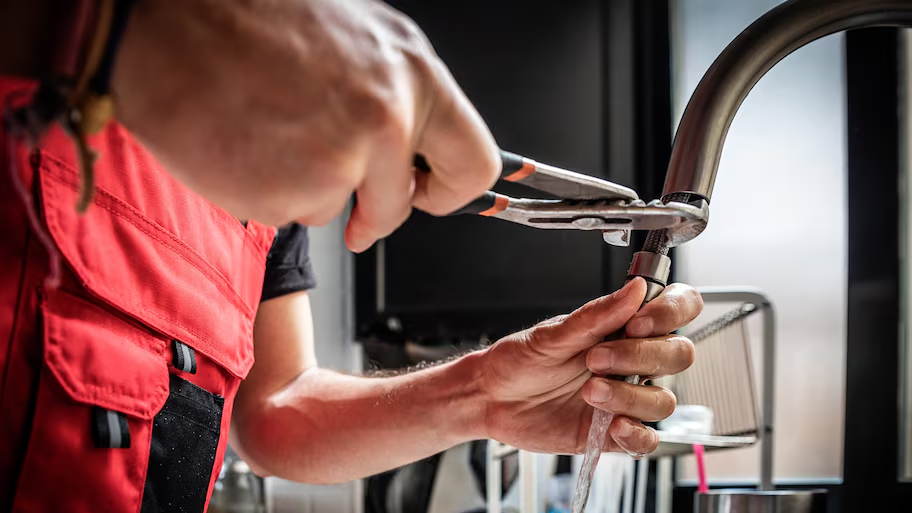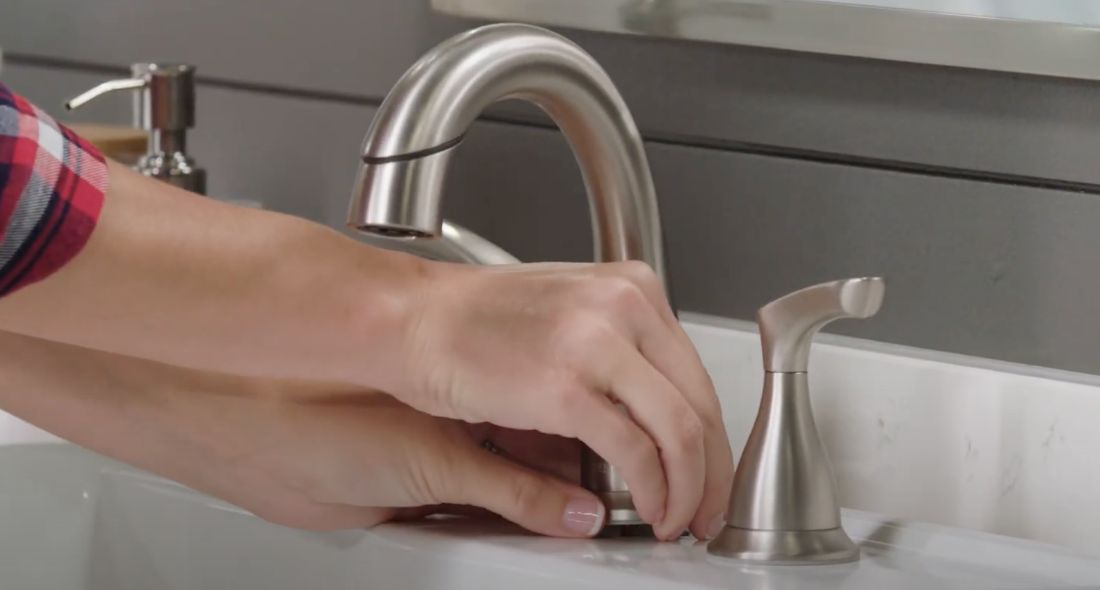Our Relevance of Resolving a Dripping Faucet
Our Relevance of Resolving a Dripping Faucet
Blog Article
We have encountered this great article about Should I Repair or Replace a Leaky Faucet? down the page on the internet and thought it made perfect sense to share it with you in this article.

Leaking taps could seem like a small aggravation, however their impact exceeds just the nuisance of the sound. From wasting water to sustaining unnecessary economic costs and health risks, disregarding a leaking faucet can cause various effects. In this write-up, we'll delve into why it's crucial to address this common household issue without delay and efficiently.
Wastage of Water
Environmental Effect
Trickling faucets contribute considerably to water waste. According to the Environmental Protection Agency (EPA), a single tap dripping at one drip per second can waste more than 3,000 gallons of water annually. This not only strains water sources yet additionally affects ecosystems and wildlife dependent on them.
Financial Costs
Raised Water Bills
Beyond the ecological effect, trickling taps can blow up water bills significantly. The accumulated wastefulness in time translates right into higher utility costs, which could have been prevented with timely repairs.
Potential Residential Property Damage
Additionally, extended dripping can bring about damage to fixtures and surface areas surrounding the tap. Water buildup can trigger staining, deterioration, and also structural problems if left neglected, causing additional repair service costs.
Health Concerns
Mold and Mold Development
The continuous visibility of dampness from a trickling tap develops an ideal environment for mold and mildew growth. These fungi not only compromise interior air quality however also position health and wellness dangers, specifically for people with respiratory problems or allergic reactions.
Waterborne Conditions
Stationary water in dripping taps can end up being a breeding place for germs and various other pathogens, increasing the threat of waterborne conditions. Impurities such as Legionella bacteria flourish in stagnant water, potentially bring about serious ailments when consumed or breathed in.
DIY vs. Expert Repair work
Benefits and drawbacks of DIY Fixing
While some might try to fix a trickling tap themselves, do it yourself repair services come with their very own set of challenges. Without proper knowledge and tools, do it yourself attempts can exacerbate the problem or cause insufficient repair services, prolonging the trouble.
Advantages of Employing a Specialist Plumber
Working with a professional plumber makes sure that the underlying cause of the dripping tap is dealt with successfully. Plumbers possess the competence and equipment to diagnose and repair faucet issues effectively, saving time and reducing the risk of further damages.
Step-by-Step Guide to Repairing a Dripping Tap
Devices Required
Before attempting to deal with a trickling tap, collect the essential devices, including a flexible wrench, screwdrivers, substitute parts (such as washers or cartridges), and plumber's tape.
Typical Tap Issues and Their Solutions
Identify the sort of tap and the certain issue creating the drip. Usual problems include worn-out washing machines, rusty valve seats, or damaged O-rings. Describe maker directions or online tutorials for step-by-step assistance on repair work.
Preventive Measures
Routine Upkeep Tips
To stop leaking faucets, execute routine upkeep such as cleansing aerators, inspecting for leakages, and replacing damaged components without delay. Additionally, take into consideration installing water-saving gadgets or upgrading to a lot more efficient components.
Importance of Prompt Repairs
Attending to leaking faucets as soon as they're seen protects against more water wastage and potential damages, inevitably conserving both water and money in the long run.
Impact on Home Worth
Perception of Well-Maintained Property
Preserving a building in good condition, including attending to upkeep issues like leaking taps, boosts its viewed worth and worth amongst prospective purchasers or occupants.
Impact on Resale Worth
Features with properly maintained plumbing fixtures, including faucets, command greater resale values in the realty market. Attending to trickling faucets can contribute to a positive perception during building evaluations and negotiations.
Environmental Obligation
Private Contribution to Conservation
Taking duty for taking care of leaking faucets lines up with wider efforts toward water conservation and ecological sustainability. Every individual's activities jointly make a considerable impact on preserving precious resources.
Lasting Living Practices
By focusing on punctual repair work and taking on water-saving behaviors, people add to sustainable living techniques that benefit both present and future generations.
Conclusion
Resolving a trickling tap goes beyond mere convenience; it's a necessary step towards preserving water, lowering economic expenses, and guarding wellness and home. Whether through do it yourself repair services or expert assistance, doing something about it to take care of leaking taps is a tiny yet impactful means to advertise liable stewardship of resources and add to a healthier, much more lasting future.
How to Fix a Dripping or Leaky Faucet
A leaking faucet is one of the most common problems that homeowners encounter, but it being commonplace doesn’t make it any less annoying. The constant drip drip drip of a leaking bathtub faucet, showerhead, or sink tap can disturb your home’s serenity. Left neglected, a dripping faucet can also result in higher water bills and discoloration or mold growth in your sink or plumbing fixtures.
Fortunately, you don’t have to be a trained plumber to know how to stop a dripping faucet. With some basic tools, replacement parts, and a little patience, leaky faucet repair is a breeze. In this article, we’ll explain what causes dripping faucets and how you can fix them.
What Causes a Leaking Faucet?
Kitchen and bathroom faucets come in all manner of designs, but most involve some combination of valves, O-rings, seals, and washers. The O-ring is usually the weakest link, but any one of these pieces can wear down over time. Heat, moisture, temperature fluctuations, minerals, mold, and movement can contribute to warping and corrosion, breaking the watertight seal. This just comes with the territory of being a homeowner. Everything is always subject to wear and tear, and some component parts of your appliances and fixtures need to be replaced on occasion. At least replacement O-rings are cheap!
More rarely, dripping faucets can be a symptom of excessively high water pressure. Were this the case in your home, you would probably notice that the leak is not isolated to one faucet. Water pressure issues are harder to resolve on your own. We recommend contacting a professional plumber if you suspect your water pressure is too high.
How to Fix a Dripping Faucet
Pipe wrench or monkey wrench Allen wrench set Screwdrivers Old towel or rag Shut off the water.
Before you do anything, you need to turn off the water to keep from drenching your kitchen or bathroom. You should find a valve under the sink and against the wall. Once you’ve turned this valve, try turning the faucet on to confirm that the water source has been cut off.
If you can’t locate your local valve for the faucet you’re working on, you can always shut off the water to the house at the main valve. Of course, this will prohibit anyone from using the sinks, showers, or toilets while you’re working on the faucet that’s giving you trouble.
Plug or block the drain.
You’ll be disassembling the faucet and removing some small bits of hardware. Plug the drain with a stopper or rag to avoid the possibility of a small screw falling into your P-trap.
Take apart the faucet assembly.
There are several varieties of kitchen and bathroom faucets, each with its own manner of assembly. For detailed instructions on how to disassemble your faucet, you can refer to the fixture’s manual or contact the manufacturer. If you know whether you have a ball, disc, cartridge, or compression faucet, you can find detailed schematics online.
In general, you need to begin by removing the faucet handles. You might notice a small screw that you’ll need to remove with a screwdriver or Allen wrench. If you don’t see any visible securing hardware, it’s likely hidden under a decorative cap that can be unscrewed or popped off with flathead screwdriver.
Remove each piece methodically, consulting a schematic when necessary. Take notes or arrange the pieces in such a way to make it easier to correctly reassemble the faucet later.
Remove the cartridge.
Once you’ve removed the handles and securing hardware, you should be able to remove the valve cartridge or stem. Some cartridges will slide right out. Other faucet models will require you to loosen a nut with a pipe wrench before you can remove the valve stem.
Examine the exposed hardware.
With the cartridge or stem removed, inspect the component parts. Check the rubber O-rings for wear and tear. Also examine the seat washer for corrosion or other damage. These pieces are usually the responsible parties for a dripping faucet, but it’s worth inspecting the other component parts while you have the faucet disassembled.
Find replacement parts.
Once you’ve identified which faucet component has failed, find an identical replacement. Your local hardware store should have O-rings, seat washers, and other standard components in stock. If you have a luxury or uncommon faucet, you may have to contact the manufacturer for a replacement part.
It’s a good idea to take your old parts with you to the hardware store so you can compare them with the store’s inventory and be sure you’re purchasing the correct replacement.
Reassemble the faucet.
With your new parts in hand, reconstruct the faucet and handles. Don’t be tempted to overtighten screws or nuts. You might think this could create a better seal, but it can instead damage or bend a delicate part of the assembly and create a new problem for you.
Turn on the water and test the faucet.
The only thing left to do is test your work. Unplug the sink, turn the water back on, and try the faucet. Congratulate yourself on a job well done!
https://www.libertyhomeguard.com/how-to-fix-a-dripping-or-leaky-faucet/

We were made aware of that report on Why Are My Faucets Dripping (And Can I Fix It Myself)? through a good friend on another website. Are you aware of another individual who is intrigued by the topic? Feel free to share it. Thanks a lot for taking the time to read it.
Report this page